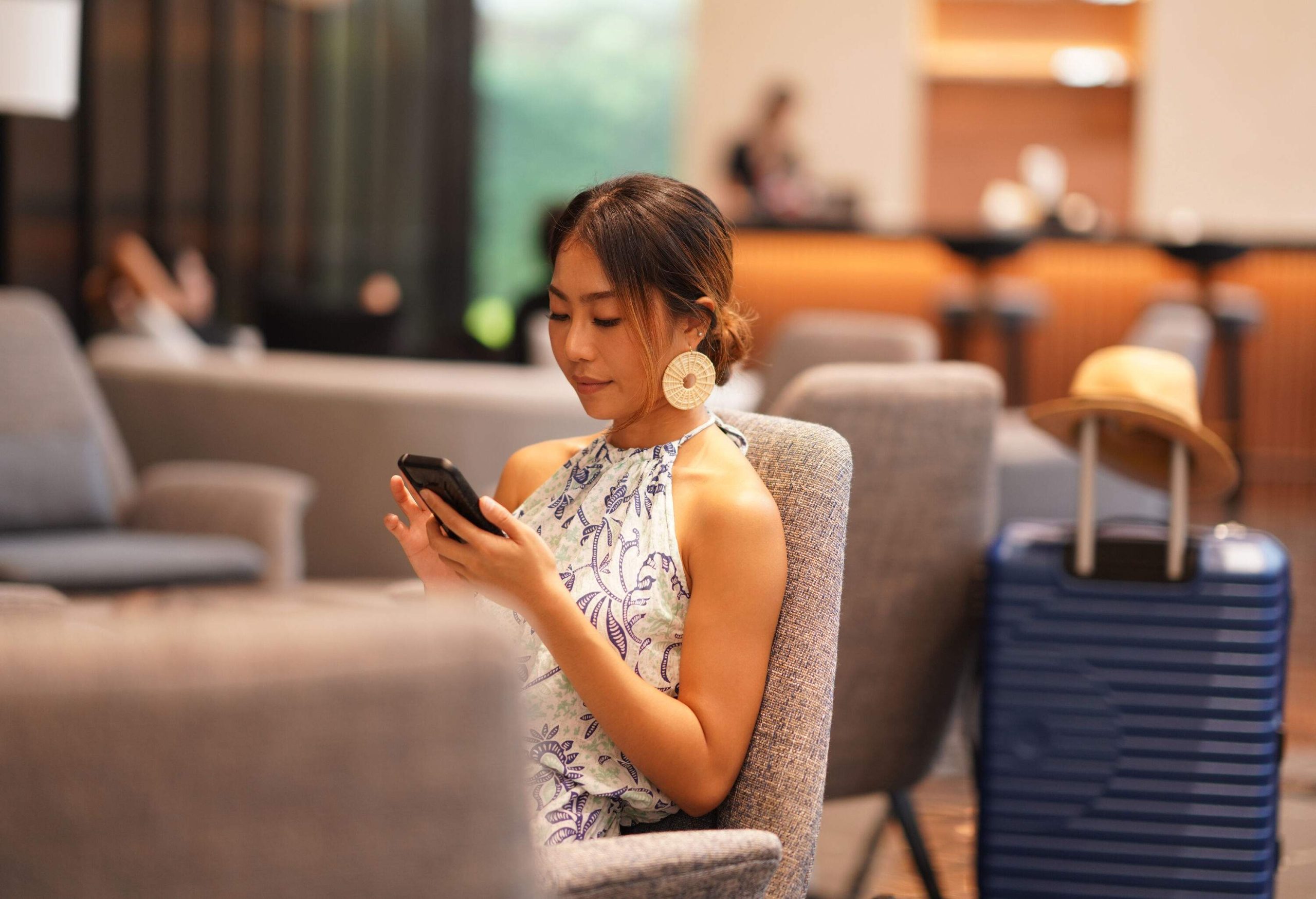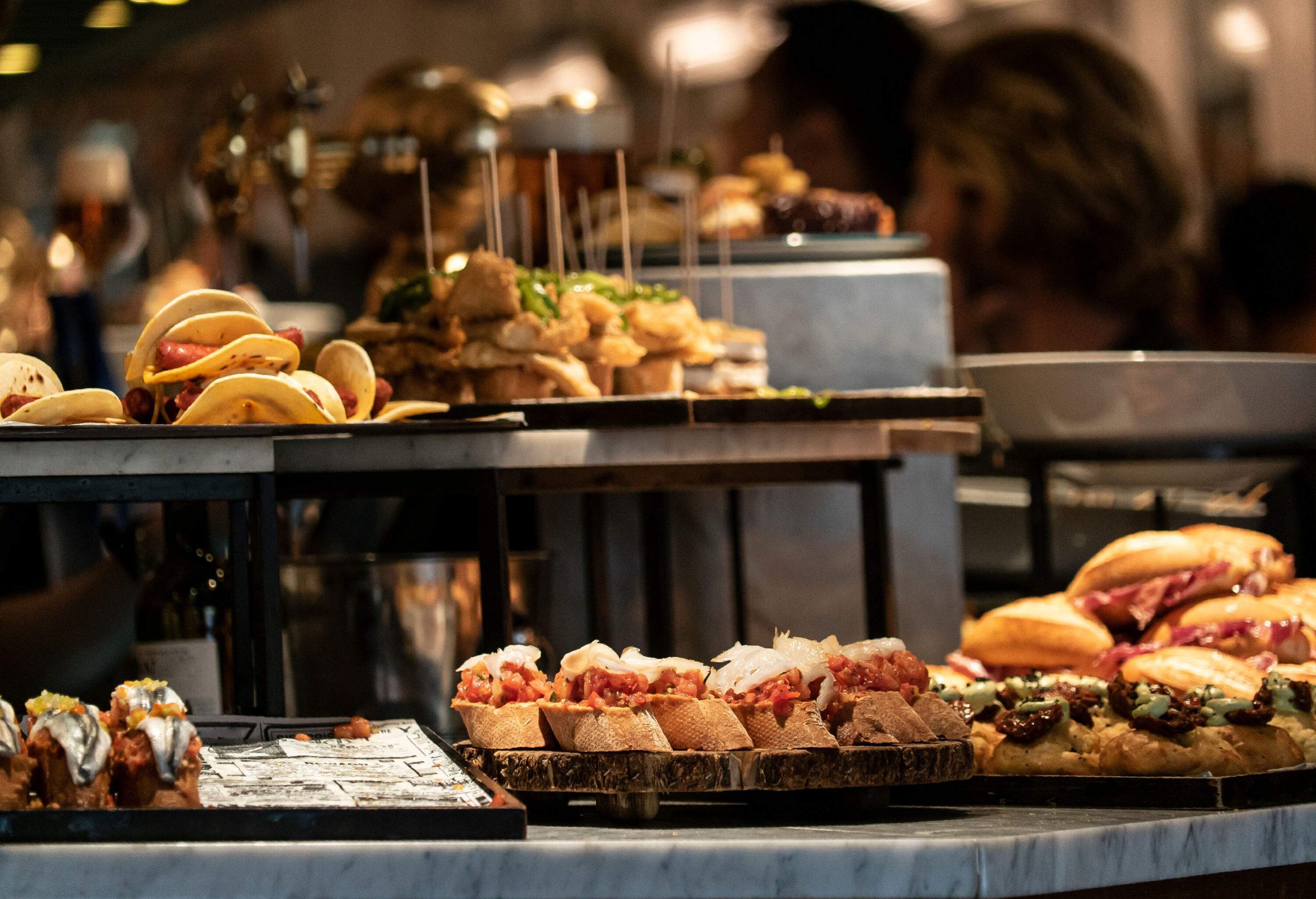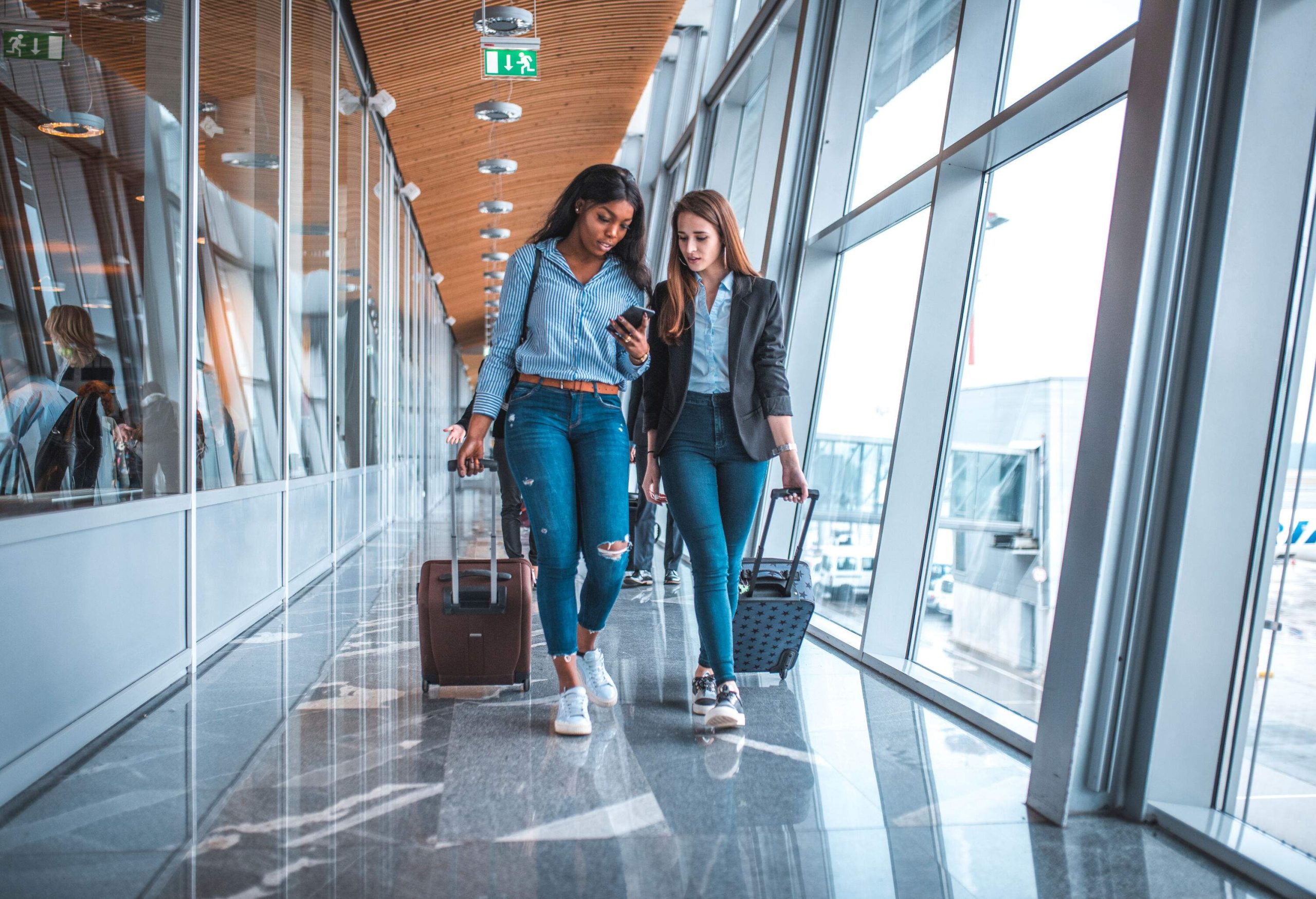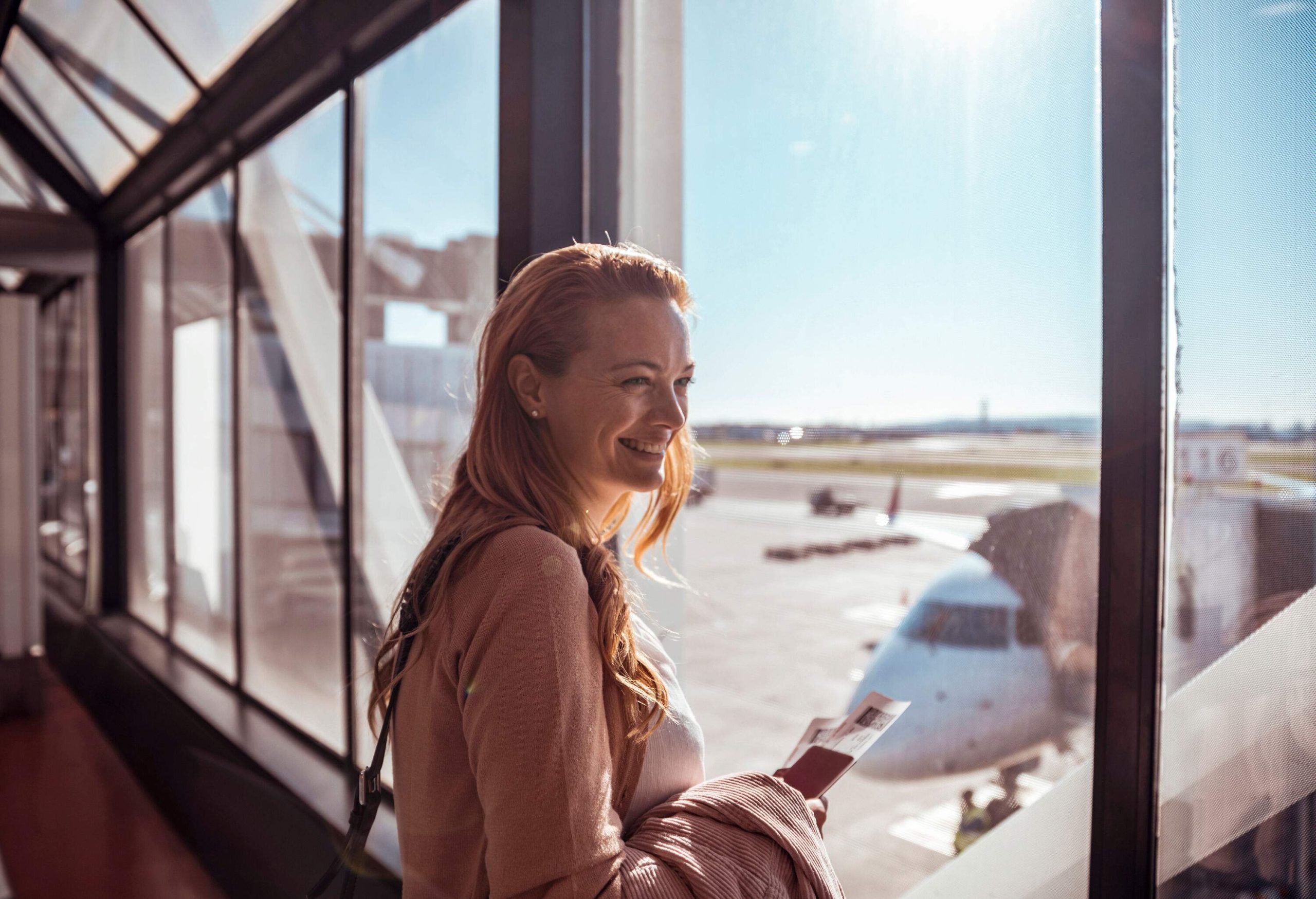For many travelers, airport lounges are a key part of a relaxing airport experience. They offer respite from the chaos, free food and drinks, and even wellness spaces – perks that can elevate pre-flight time from stressful to enjoyable.
Passengers can secure lounge access in a number of ways: via airline status, with a premium cabin ticket like business or first class, independent lounge memberships, and day passes. Here’s what to know about airport lounges and how to access them.
What are airport lounges?

Since 1939, when the first of its kind was developed by American Airlines, airport lounges have been an integral part of flying for many travelers. Now, travelers can choose from thousands of lounges in airports around the world. But figuring out the best way to access them can be a head-spinning affair.
Some lounges are airline affiliated; some are operated by credit card companies (an exciting new niche in the industry; however, there’s no single credit card that admits entry to all of them). Some lounges sell day passes; some are exclusive to only the highest-spending customers.
Finally, lounges can have different membership tiers, varying rules about guests and children, and different policies on who’s allowed in during peak times.
Types of airline lounges
In 1939, American Airlines chairman C.R. Smith had the innovative idea to create a place for elite AA passengers like A-listers, politicians, and athletes to relax while waiting for flights.
The concept took off, and there now are thousands of airport lounges of all types across the world. As demand has grown, travelers have more ways to access these coveted spaces.
Airline-affiliated lounges
Most major domestic and international carriers have their own network of lounges. These are typically located at airports in the airline’s hub cities, as well as at major travel destinations.
Airline-affiliated airport lounges have been a popular option for loyalists of a certain airline. Most provide free airport lounge access for their most valuable customers (i.e., business travelers). That means passengers in premium cabins (including business and first) have the easiest pathway to entry.
Alliance-based lounges
Another category of airport lounge is based on passengers’ airline status across an alliance of partnering airlines. For example, passengers with status on member airlines of the Star Alliance program receive access to more than 1,000 airport lounges worldwide. And passengers with status on OneWorld can take advantage of its sleek new lounge in Seoul’s Incheon International Airport, one of about 600 globally in the alliance’s network.
Credit card lounges
Passengers can also secure lounge access through premium credit cards. This aspect of lounge access has broadened considerably in recent years. Credit card companies such as Chase, American Express, and CitiBank entice high-spend travelers with access to their own high-end lounges, many of which are coveted spaces offering a luxury experience.
Independent lounges
Independent lounges, such as those offered by membership programs such as Priority Pass, are another option for travelers. Annual memberships are available for purchase (with several tiers on offer).
In addition, some premium credit cards offer independent lounge memberships as a cardholder perk, in addition to access to their own branded credit card lounges (yes, it can be confusing. That’s why it’s always best to research your options before arriving at the airport).
Services and amenities offered by airport lounges

At most lounges, passengers can expect to take advantage of a selection of complimentary food and drink (usually including alcoholic beverages), plus private seating areas.
Beyond those basics, services and amenities vary widely between lounges. Some place extra emphasis on their food-and-beverage programs, offering restaurant-quality dining experiences. At the Chase Sapphire Lounge by The Club in Boston Logan Airport, for example, passengers can order restaurant-quality dishes à la carte or relax with a signature cocktail at one of two bars.
In addition to shower facilities, more lounges are expanding their health and wellness offerings. Many lounges provide shower facilities and quiet areas, and some have gone a step further. Air France offers passengers complimentary 20-minute facials at some of its international lounges. Some select Centurion Lounges feature full spas, while Peloton enthusiasts can squeeze in a ride at the Capital One Lounge in Dallas-Fort Worth International Airport.
How to access airport lounges

How passengers access airport lounges (and whether they need to pay to do so) largely depends on their airline ticket or their credit card. But passengers can also take advantage of independent lounge memberships such as Priority Pass. Many lounges also offer day passes for purchase.
Keep in mind, however, there are a dizzying array of restrictions and exemptions across those options. Be sure to check ahead of time to avoid being turned away at the lounge entrance (which happened to me recently following Delta’s confusing changes to its lounge restrictions; more on that below).
A premium cabin ticket
Having a business class (or higher) ticket is often the most straightforward way to get into an airport lounge. In certain destinations with high-spend travelers, there are even separate airline lounges for business or first class (Dubai is one).
Occasionally, a premium economy ticket may grant lounge access depending on where you’re headed. But be sure to check with your airline ahead of time.
Airline status and upgrades
Elite airline status is another virtually guaranteed way to obtain free airport lounge access. However, this aspect of lounge access is increasingly difficult to obtain, unless you’re spending big bucks on premium tickets with one airline.
As a way to alleviate overcrowding in some airport lounges, some carriers, most notably Delta, have made it more difficult to access lounges for certain cardholders. Some changes have already gone into effect; some will be rolled out in 2025.
But passengers who pay to upgrade their ticket into business or first class also can get lounge access that way. Airlines will sometimes offer the passengers the chance to upgrade to a higher-class cabin prior to check-in. Depending on the price, this can be a great way to take advantage of free airport lounge access, too.
Credit cards and lounge memberships
Passengers can also get lounge access through perks with certain credit cards. This aspect of airport lounges has broadened considerably in recent years, with companies sweetening the deal on some of their higher-perk cards.
In addition, some of the world’s swankiest airport lounges are credit-card affiliated. Amex’s Centurion Lounges are revered among travelers for their extensive amenities and high-end digs. Capital One and Chase also have leveled up their lounge offerings in recent years.
Miles Redemption
Most airlines allow passengers to redeem miles either for day passes or lounge memberships. (Pro tip: Generally, however, miles go the furthest when used on ticket purchases, not lounge access.)
Day Passes and Other Options
Lounges at most major airports offer day passes that provide an option for passengers who don’t otherwise have lounge access. The cost usually ranges between around $40 and $100 per person. Day passes can be usually purchased at both airline and independent lounges.
Escape Lounges, with a network of about two dozen lounges across the U.S. and U.K., offer day passes that can be booked ahead of time for or at the door. If you need to catch some shuteye, consider Minute Suites, which are available in a handful of U.S. airports and offer small private rooms perfect for napping or relaxing.
How to get free airport lounge access

There are a number of ways passengers can savor the relaxing environment of an airport lounge on a complimentary basis. But which option is best suited to each passenger is highly variable. So it’s highly recommended to do some research ahead of time. Don’t forget to factor in your home airport and others you frequently travel to and from. Depending on which lounges are offered, one credit card or lounge membership might be a better fit.
Premium credit cards
A growing number of travelers use premium credit cards for lounge access.
American Express kicked off the trend when it opened its first lounge about a decade ago. Its network of 1,400 lounges includes its swanky Centurion Lounges. These luxury spaces beckon with amenities like spas, shower suites, and restaurant-quality dining.
Capital One, meanwhile, rolled out its Capital One Lounge network in 2021 with a lounge at Dallas-Fort Worth and has since added Washington Dulles and Denver. In addition, Chase’s credit cards are also popular among frequent travelers.
But to access these coveted realms, passengers must pony up. Annual fees for premium travel credit cards cost around $500-$600 (and higher). However, the ensuing access to high-end airport lounges can be a game-changer for frequent travelers.
Airline-affiliated credit cards
Airline-affiliated cards are another option for snagging a spot in top-notch lounges. Delta loyalists may want to check out Delta’s SkyMiles Reserve American Express Card. Its annual fee is high ($550), but it awards cardholders free access to Centurion Lounges and Delta Sky Clubs.
Among American Airlines passengers, the Citi AAdvantage Executive World Elite Mastercard is a popular choice. Its $595 annual fee covers free access to American Airlines Admirals Club access for the cardholder, their immediate family, or two guests. As a result, it’s a good one to consider if you travel often with a group.
United also offers several credit cards that enable passengers to access its lounges.
Membership programs
Passengers can also secure lounge access via various membership offerings. One avenue is through the airline itself. For a fee, usually $500 or higher, most major airlines offer a lounge membership. Prices are often based on passengers’ status levels. United’s program, for example, starts with an annual rate of $550.
Delta and American Airlines offer similar programs. Keep in mind, too, that some airline-affiliated premium credit cards also include lounge membership in their annual fees.
Independent membership programs allow passengers with an easy and relatively affordable way to get free airport lounge access. Priority Pass, for example, is the largest membership of independent lounges, with more than 1,400 across the world. Membership starts as low as $99, with two additional tiers of options.
Final tips for airport lounges

Travelers can choose from several ways to access the thousands of airport lounges around the world. However, this also means they must navigate all the various restrictions and requirements that come alongside credit cards and/or various memberships , which can be a time-consuming task. It pays off to do research ahead of time, so when you arrive at the lounge, you can make the most of your time there.
How this guide was created
As a longtime travel journalist who frequently flies for work (and for fun), I love a good airport lounge. Setting up shop with my laptop and a cappuccino (or a glass of wine) is my preferred way to pass the hours before a flight. For this guide, I’ve tapped into my experiences at a variety of airport lounges, from the average to the ultra-elite (like my favorite so far: one of Emirates’ business-class lounges in Dubai). I’ve also done extensive research to gather the most up-to-date information on airport lounges.





